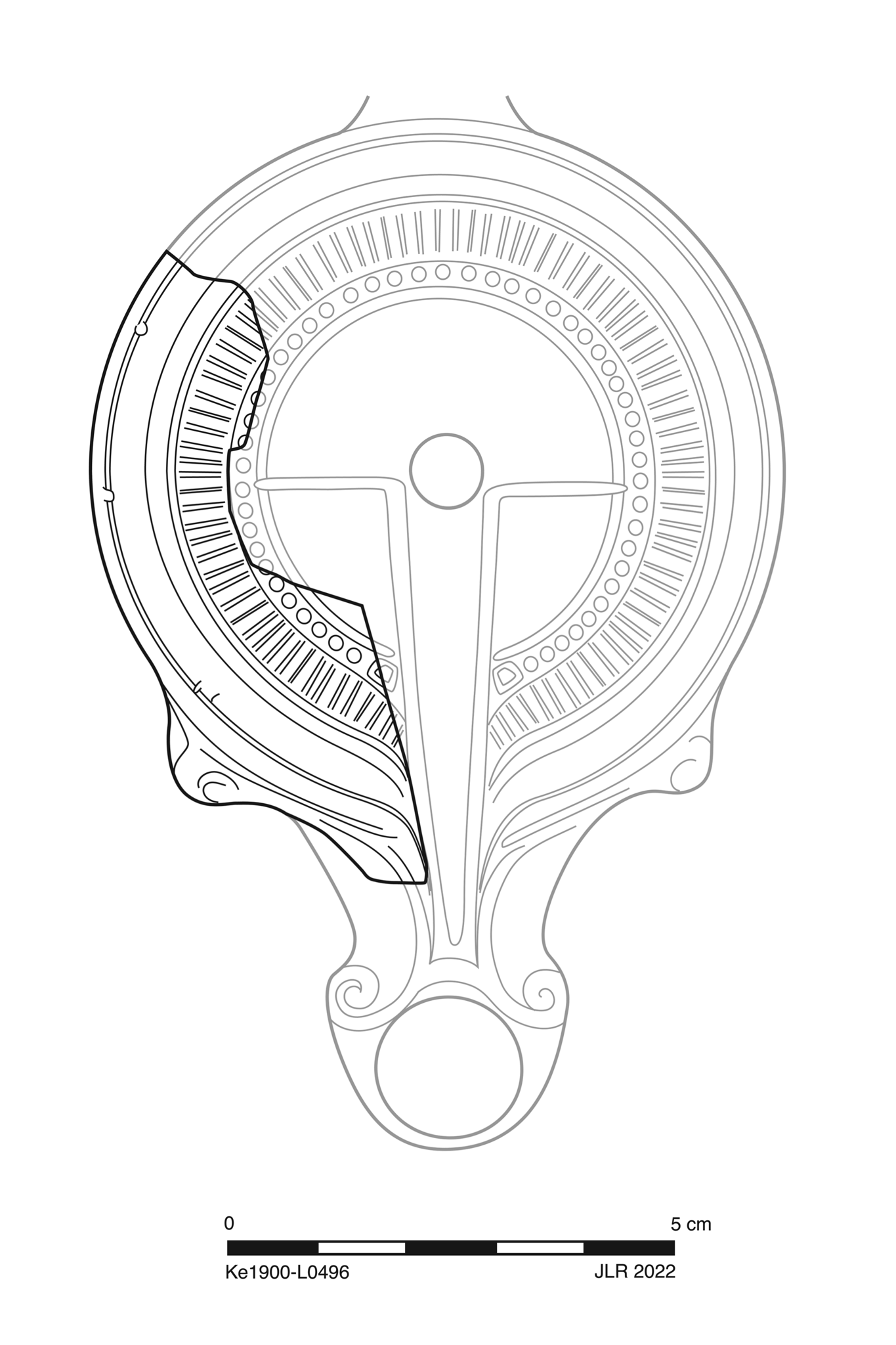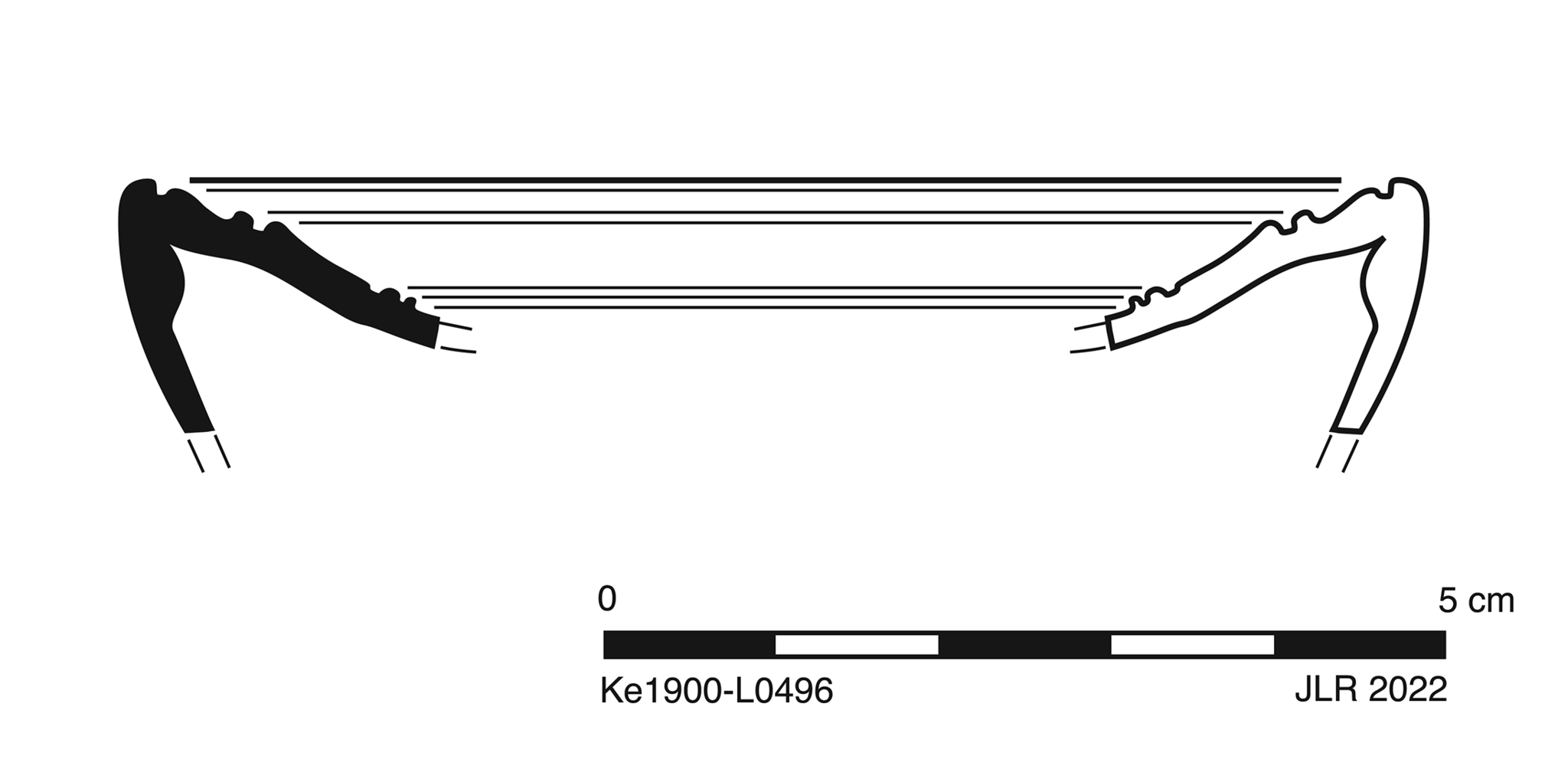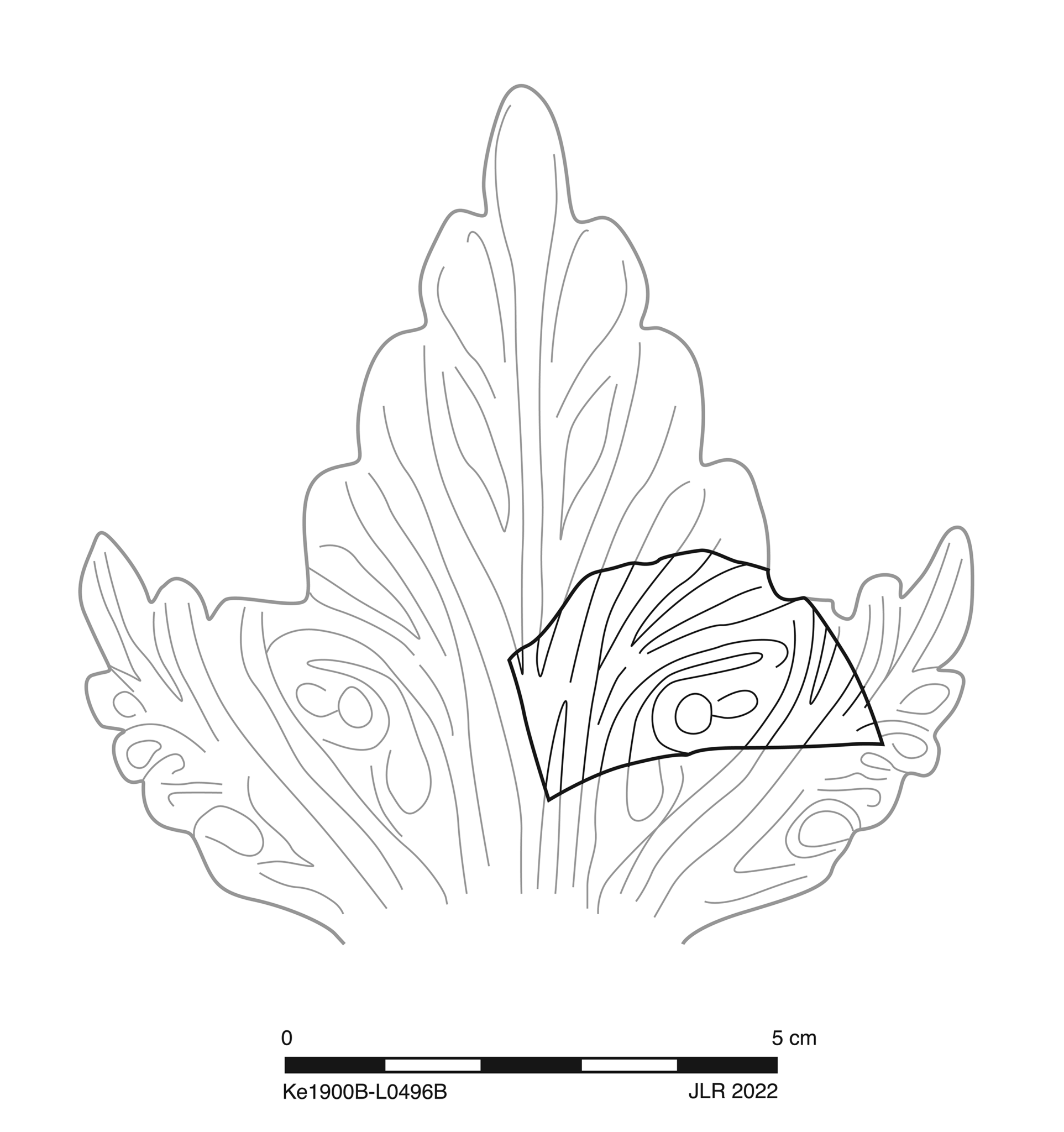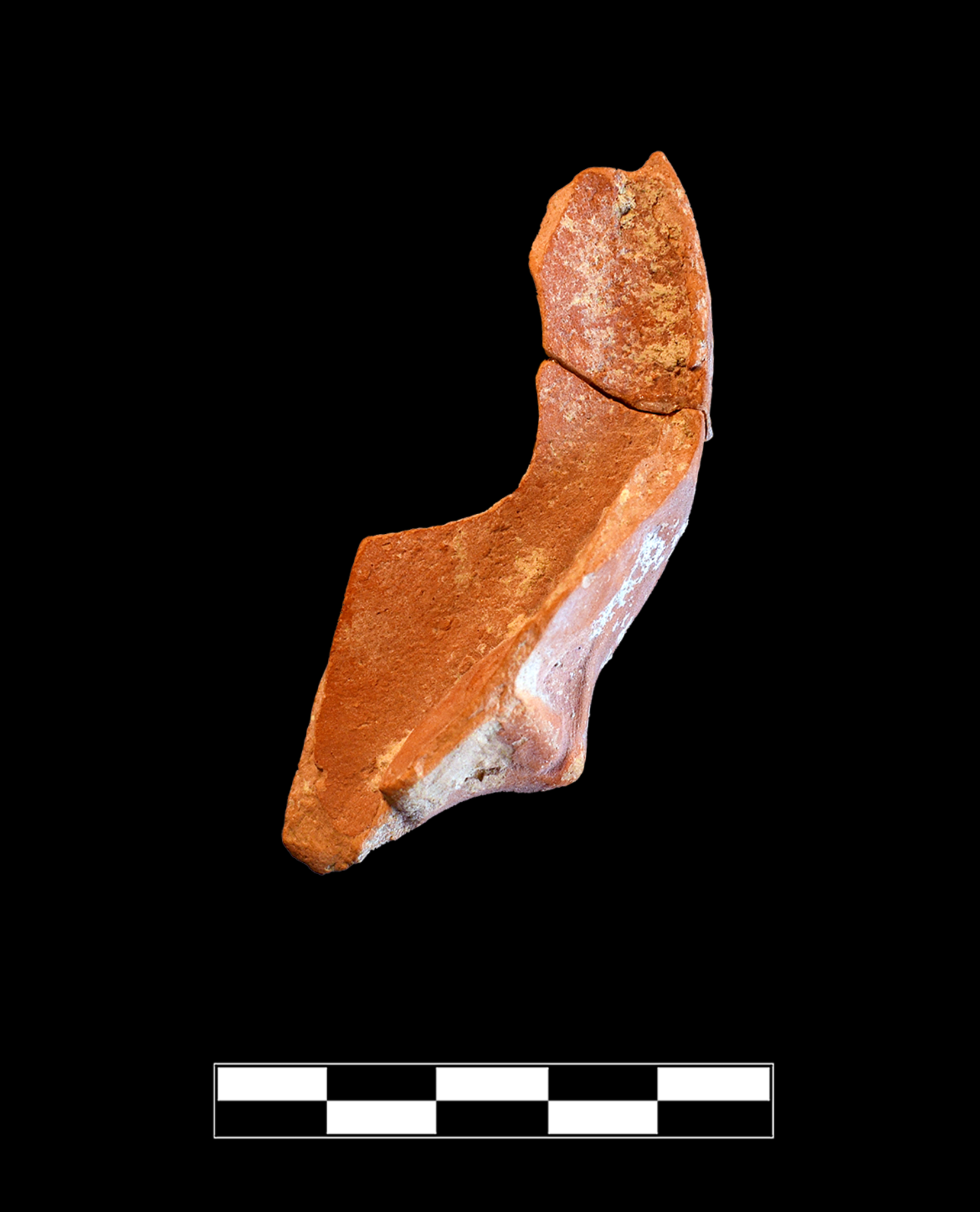- KE 1900 (Early Roman Asia Minor Lamp) [permalink] [next]
- Type
- Inventoried Object
- Logical part of
- Chicago/Indiana/Vanderbilt Excavations Inventoried Objects
- Subject number
- L 496
- Typological identification
- Early-Middle Roman Asia Minor Lamp
- Comparanda
- Fr. a: cf. BussièreWohl2017, Getty Lamps on-line, no. 164 (identified as southern Anatolian [on what grounds?], Augustan-Claudian)
- Comparanda
- Fr. a: cf. DélosXXVI, p. 124, no. 4580, pl. 29 (“Italienne“, beginning 1st c. CE; P. Bruneau)
- Comparanda
- Fr. b: cf. AgoraVII, p. 74, no. 20, pl. 1 (handle ornament with “black glaze“; “Eastern Aegean area“ first half 1st century C.E.)
- Comparanda
- Fr. b: sim. DélosXXVI, pp. 89-91, 92, nos. 4219, 4230, pl. 1 (similar forms in rose fabric with red slip; P. Bruneau identified as Late Hellenistic-Early Roman “pergaménienne“)
- Comparanda
- Fr. b: sim. PergamonXIII, pp. 102, 108, nos. 55, 130, pls. 2, 4 (“pergamenisch“, dated first half of 1st c. CE and early 1st c. CE; A. Heimerl)
- Fabric, firing, surface
- Fabric: pinkish pale red; fine, varied tiny black and white bits, slightly micaceous. Hard, consistent firing. Thick, even, semiglossy slip, orangish red. Western Asia Minor.
- Preservation description
- Three small sherds, two joining sherds (fr. a) preserve ca. 40% of left shoulder with adjacent discus and base of volute handle, and one preserves small part of foliate handle ornament (fr. b). Slight, somewhat extensive abrasion and minor shipping; slip in good condition; worn breaks; uncommon to common specks of encrustation.
- Estimated body diameter
- 0.07
- Preserved length
- 0.051
- Preserved width
- 0.03
- Weight (kg)
- 0.011
- Belongs to Historical Period
- Early Roman (Historical Period)
- Material
- Ceramic (Material)
- Drawing
-

- Drawing
-

- Drawing
-

- Pagescan
- Photograph
-

- Photograph
-

- Photograph
-


